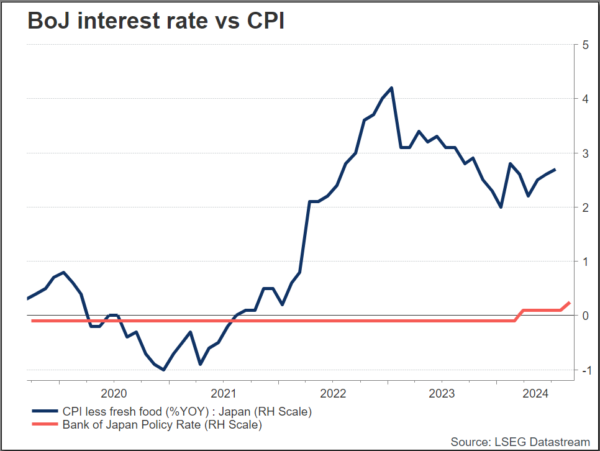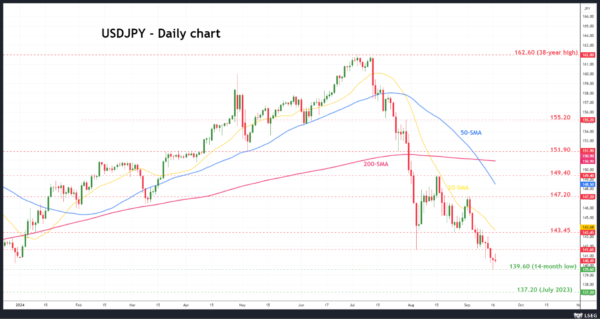- BoJ expects no change
- Ueda comments may provide insight
- USDJPY remains above 140.00 despite a severe sell-off
- BoJ interest rate decision on Friday at 03:00 GMT
BoJ decision to keep interest rate steady
At its meeting on Friday, the Bank of Japan (BoJ) is anticipated to keep its monetary policy position unchanged. Most market watchers expect the Bank of Japan to maintain its target range for short-term interest rates at 0% to 1%. This move is in line with the Bank of Japan’s (BoJ) continuing policy of bolstering economic stability through vigilant monitoring of inflation and financial market circumstances. The Bank of Japan is unlikely to make any hasty adjustments to its interest rates, regardless of the pressures and uncertainties plaguing the global economy. The next likely rate hike is in December. This cautious approach reflects the BoJ’s dedication to a measured and deliberate response to economic events. In July, Japanese policymakers raised interest rates by 15 bps and have since signalled that more hikes are looming.
The decision by the Bank of Japan is set against the background of major global central bank activity, including the expected actions of the Federal Reserve and the Bank of England. These international factors further complicate the policy choices of the BoJ. Inflation and financial market stability would most likely continue to be the BoJ’s top priorities. The effects of earlier policy shifts have been carefully tracked by the central bank, and it will maintain this practice going forward.
Ueda comments
In his Friday remarks, Bank of Japan Governor Kazuo Ueda is anticipated to highlight the central bank’s cautious monetary policy. He would likely emphasize the BoJ’s commitment to maintaining its policy stance while closely monitoring economic signs. Ueda will likely indicate that future rate hikes are dependent on the economy and inflation. Ueda’s statements suggest additional rate hikes if economic conditions match the BoJ’s predictions, strengthening the steady normalization of policy. He may also emphasize watching global economic trends, particularly how other big central banks like the Fed respond. Ueda may also emphasize the need for transparent market communication to reduce volatility, considering recent market reactions to BoJ policy modifications. Ueda’s statements should indicate that the BoJ is watchful and sensitive to economic changes while maintaining policy stability.
Japan’s inflation and wage growth
Japan’s underlying inflation rate is projected to stabilize at around 2% as a result of continuous wage growth and effective price pass-through. Following the 2024 spring wage negotiations, the job situation has shown a modest improvement, as real earnings have continued to rise. Notwithstanding the effects of price increases, private spending has shown resilience, and the financial conditions have been favorable. The prevailing economic conditions provide a foundation for the Bank of Japan’s prudent strategy towards policy modifications, which seeks to strike a balance between the provision of economic assistance and the objective of attaining enduring financial stability.
Technical Analysis on USDJPY
USDJPY plunged towards a new 14-month low of 139.60 during Monday’s session but is currently hovering above the 140.00 round number. After the pullback off the 147.20 resistance, the pair lost more than 5%, continuing the strong selling interest. More downside pressures, especially after the Fed decision on Friday, may take the market to the July 2023 low of 137.20.
On the other hand, a rise above the 20-day SMA at 143.65 could push the price towards the 146.45-147.15 restrictive region.
















